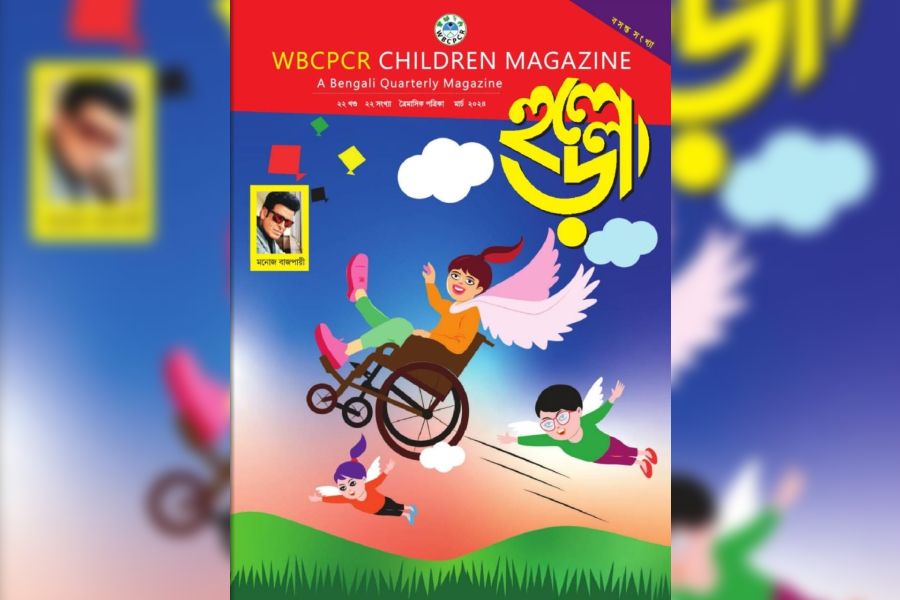The rights of children with disabilities are the focus of the latest issue
of the quarterly magazine published by the West Bengal Commission for Protection of Child Rights (WBCPCR).
The March issue of the magazine, Hullor, through its write-up and comic strips, has tried to convey the message of inclusion and generate more sensitivity in society.
“We want to reach out to the masses and make them aware of individuals with disabilities and their rights. Awareness is still not at the level that it should be,” said Tulika Das, chairperson, WBCPCR.
Das said that it was the attitudinal barriers or the environment that aggravated the problem for individuals with disabilities.
“It is the barrier created that is hampering an individual’s functional status in society. For example, if a child is not being able to go to school that is because the school is not accessible or the teaching methods do not cater to him or her,” said Das.
Das has written the cover story on disability and the rights of people.
“We have to disseminate the information in society about the schemes that are provided. Lack of information is also a barrier,” said Das.
The editor of Hullor, Ananya Chatterjee Chakraborti, has written an editorial on dyslexia.
Children with disabilities are treated as invisible and often go unnoticed, said Chatterjee Chakraborti, who is also the adviser to the commission. “Even family members try to hide them. Inclusion has to be inculcated right from childhood.”
The magazine started in 2017 and is published in March, June, September and December.
In the September edition, the Bengali magazine included four pages in
Braille.
The comic strip in the current edition will cater to both young and old.
It is about a wheelchair-bound girl who visits a relative’s place and how she is perceived by different members of the family.
When one person assumes that she cannot do anything, the girl contests and says that she might not be able to walk but can use her hand to do things.
The comic strip raises the problem of barriers at home and outside, some of which go unnoticed by people without disabilities.
Simple things like a threshold make mobility a problem for a person in a wheelchair.
Old buildings or even Metro stations, do not
have ramps which makes them inaccessible for those with disabilities, the
comic strip says.
“We understand that there is a decline in reading habits among adults and children. But people usually read the comics and hence, we have used this medium to convey a serious message,” said Mahuya Santra, executive editor, Hullor and consulting editor, WBCPCR.
Santra said that the comic strip appeals to adults as well as children.
“Children on their own are inclusive but are tutored to exclude others by adults, which we want to set right.”
